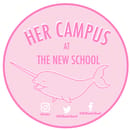There’s not much about life in the Victorian Era that was more inclusive than life today, but a data model run by the University of Illinois and the University of California Berkeley shows that there were actually more women authors in the Victorian times than there are in 2019. It tends to surprise people that there is still so much misogyny in the publishing industry and in the sphere surrounding fiction, because there is something of a cultural consensus that the humanities are a warmer, fuzzier discipline than STEM or business. But no, the publishing industry and the very culture around fiction itself is rampant with bias against women that many female writers internalize.
Speaking from personal experience, I wrote main characters that were exclusively male because I thought it felt more universal and I didn’t want to write from the specific experience of being a woman. I felt that there was something frivolous about using my identity to tell a story. The irony of this is that as a female reader, I had always related more to male characters simply because there were more of them. There was no female Holden Caulfield, or at least not one as widely read and canonized. There are certainly books about women, think Anna Karenina or Emma Bovary, but these women are rarely the perspective characters awarded the same humanity as a narrator like Caulfield, and their stories are written by male authors painting them as tragic figures or objects of the story as opposed to subjects. Again, as a female reader, I can relate to male characters more, and yet when women write their own stories, the complaint by male readers is that they aren’t relatable. In a review of Italian author Elena Ferrante’s work in the Sydney Morning Herald one reader griped, “How much better would these books be if Ferrante had paid more than lip-service to the men?” And this reviewer is not alone: In the below graphs from a study by Nicola Griffith, one can see that women do not win prestigious literary awards as often as men do.
Griffith’s pie charts demonstrate that bias against women writers is much more difficult to quantify than bias in the tech industry. However, it still rears its ugly head in situations like J.K. Rowling’s publisher telling her to use her initials to publish Harry Potter. Rowling said in an interview “We think this is a book that will appeal to boys and girls. And I said, oh, great. And they said, so could we use your initials? […] Boys might not have wanted to read a book if they knew it was written by a woman!” To that, I would roll my eyes and say that women have been reading stories written by men for generations, and when we write our own stories, such as Jane Austen or Colette did, they are erased or patronized as being lesser. Romance novels, mostly written by women, are one of the most heavily mocked genres in literary spheres, yet campy science fiction or horror is not given nearly as much ridicule.
To cut a very long history short, literary modernist giants like Ernest Hemingway paved the way for a sort of masculinization of fiction that earlier referenced Victorian statistic demonstrates – from the 1800s to around the 1970s there was a steady decline in women as published fiction authors, and certainly no progress was made on women being canonized. For those not majoring in Literary Studies, a canonized author is one you might see on your English class syllabus, and to delve into what canon means completely would be another article, but to be canonized is to be thought of as a literary norm. The closest I can think of to canonized female authors would be Austen or Toni Morrison, but it is only in the past twenty years or so that books by women have started to be considered “classics” or canonized.
If you are female and you are a writer, you cannot simply be a writer. You are a woman writer whose work is attached to your identity. You are not allowed the privilege of being judged on your story alone. So how can we fix this? If you are a woman or come from any minority group and write poems, prose, nonfiction, or plays, take Margaret Atwood’s advice in The Handmaid’s Tale and don’t let the bastards get you down – tell your story. If you are not a writer, buy books by not just canonized writers but contemporary women. When I used to see women writing from experience as writing fluff as a younger writer, I was buying into the myth that stories by women, about women are not worth telling. But in reality, if you are able to like books by men, you will probably find a book by a woman you also like, because, shockingly, women are also human beings with compelling stories. The demand for the publishing industry and literary canon to be more inclusive of women, is the demand for women to be treated with humanity. It is the demand to allow women a voice, one of the most standard rights of human existence.



